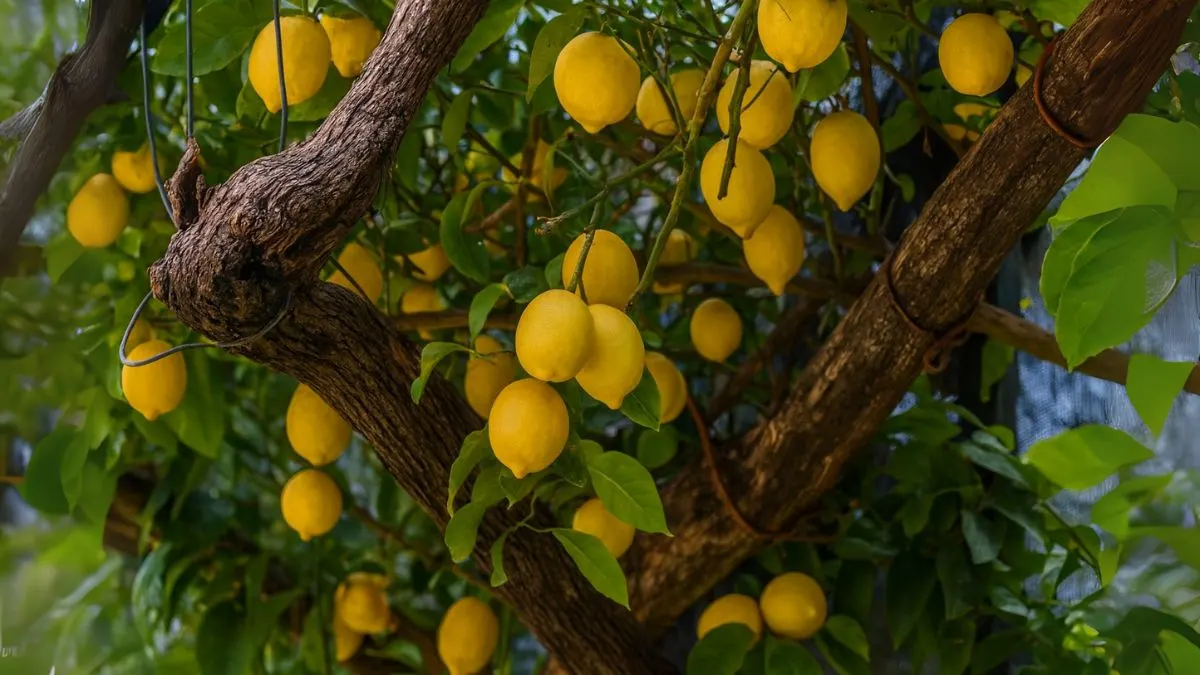A fresh squeeze of lemon in your tea, a dash in your salad, or a refreshing lemonade in summer—lemons are essential in every kitchen. Imagine having your own lemon plant thriving right outside your window or balcony. The good news is, you don’t need a commercial orchard to enjoy homegrown lemons.
Whether you live in a warm tropical climate or colder regions like Canada and the USA, with the right care and patience, you can grow a healthy lemon tree in pots, containers, or your backyard.
Why Grow Lemon Plants at Home?

Apart from the joy of harvesting your own citrus, lemon plants are known for their glossy leaves, fragrant blossoms, and health-packed fruits. Rich in Vitamin C, antioxidants, and minerals, lemons boost immunity, aid digestion, and improve skin health.
When I started my gardening journey, my first attempt at growing lemons was on a sunny balcony with just one container. Within a year, I had flowers and a few green fruits hanging—proof that with care, anyone can do it.
Choosing the Right Variety
Before planting, decide whether you want a full-size lemon tree or a dwarf variety suitable for containers.
- Meyer Lemon – popular for its sweetness, perfect for small gardens and patios.
- Eureka Lemon – commonly grown in North America, strong citrus aroma.
- Ponderosa Lemon – produces large, juicy fruits but needs more space.
Soil Preparation
Like other citrus plants, lemon or any other citrus plant needs well draining light soil. Without proper drainage, roots may rot.
- pH level: Slightly acidic, between 5.5 and 6.5.
- Mix compost, sand, and garden soil for a light, fertile base.
- If planting in pots, ensure there are holes at the bottom for water flow.
Also Read: How to Grow Old-Fashioned Hollyhocks with Modern Ease
Sunlight Requirements
Lemons are sun-lovers.
- Lemon trees require a lot of bright, direct sunlight.
- Ideally, lemon trees prefer a lot of sunlight, 8 hours per day is best.
- If you live in colder regions, grow them in containers and move them near a south-facing window or under grow lights during winters.
Remember, always provide at least six hours of direct sunlight daily in a warm, sunny climate with well-draining soil to maximize fruiting.
Planting Lemon Seeds or Saplings
You can grow lemons from seeds or buy young saplings from nurseries.
- From seeds – Dry fresh lemon seeds for a day, then plant them 1/2 inch deep in potting soil. Germination may take 2–3 weeks.
- From saplings – Saplings give faster results. Choose healthy, disease-free plants and transfer them to larger pots or garden beds.
Space trees at least 10–15 feet apart in gardens, or plant one sapling per large container.
Watering Lemon Plants
One of the most important steps is proper watering.
- Lemon trees need to be watered regularly.
- Water deeply once or twice a week, ensuring soil is moist but not soggy.
- During summers, increase frequency.
- Reduce watering slightly in winters but never let the soil dry completely.
Fertilization Needs
Lemons are heavy feeders.
- Use nitrogen-rich fertilizer every 4–6 weeks during the growing season.
- Organic compost or vermicompost can be added for better fruit quality.
- Avoid over-fertilizing, which may lead to leafy growth without fruits.
Also Read: Plant Terrariums 101: The Simple Way to Build a Mini Jungle
Pruning & Maintenance
Pruning helps maintain shape and improve fruit yield.
- Remove dry, dead, or crossing branches.
- Thin overcrowded areas to improve air circulation.
- Trim weak shoots growing at the base of the trunk.
Pests & Diseases
Lemon plants may attract pests like:
- Aphids – control with neem oil spray.
- Leaf miners – remove affected leaves early.
- Citrus canker – avoid water splashing on leaves and use copper fungicide if needed.
Container vs Ground Planting
Aspect |
Container Planting |
Ground Planting |
Space |
Best for balconies and patios |
Requires larger garden space |
Mobility |
Easy to move indoors in winters |
Fixed in one spot |
Growth |
Dwarf varieties grow better in pots |
Standard varieties thrive better in soil |
Yield |
Moderate, depends on care |
Higher yield if conditions are optimal |
Seasonal Care Tips
- Summer – Protect from extreme heat; water frequently.
- Winter – If temperatures drop below 10°C (50°F), cover plants or move pots indoors.
- Spring – Best season for flowering and fruit set; feed with fertilizer.
Also Read: Lily Varieties That Will Make Your Garden Look Like a Fairytale
Harvesting Lemons
It usually takes 2–3 years for saplings to bear fruit. Lemons are ready to harvest when:
- They turn bright yellow or light green.
- Fruits feel firm but slightly soft to the touch.
- Clip fruits with scissors instead of pulling to avoid damaging branches.
Global Popularity of Lemons
- In the USA and Canada, lemons are commonly grown in kitchen gardens and indoor pots.
- In Mediterranean regions, they are an essential part of cuisine and culture.
- In India, nimbu is used daily in drinks, pickles, and Ayurveda.
Growing lemons at home is rewarding and easier than you think. With patience and care, your lemon plant will reward you with glossy leaves, fragrant flowers, and juicy fruits—bringing sunshine to your garden and kitchen all year round.






